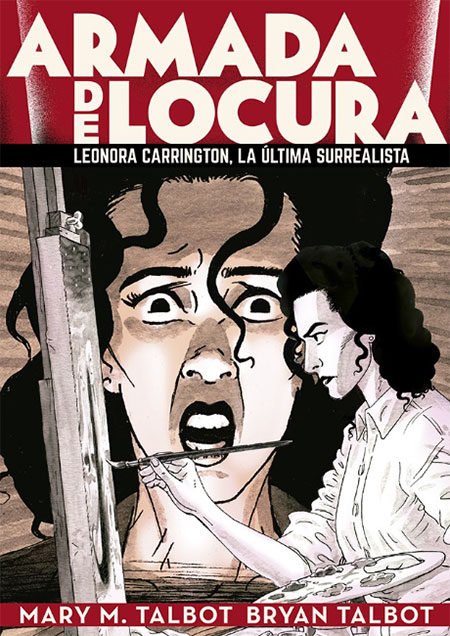The tandem Mary M. Talbot y Bryan Talbot no introduction needed. Together they have given birth to biographical comics already considered classics, among which we highlight “Sally Heathcote. Sufragista”, “The apple of his eye” o “The Red Virgin”, all published by La Cúpula. Its rigorous documentation, its staging and the final result – always fresh, commercial and with just the right information for those who later want to delve into the lives and works of its protagonists – is more than praiseworthy. On this occasion they address the life and miracles of what the book’s subtitle calls the “last surrealist”: Leonora Carrington, a multifaceted character.
Born in 1917 in an English noble house, Carrington was a born rebel. Already as a child she only disobeyed her parents, her teachers and the nuns who tried to tame her. From boarding school to convent and vice versa, Leonora fled from any educational guidelines and especially from her paternal advice. With a sincere artistic spirit and devotion to the plastic arts, she immediately began to study humanities of all kinds (from Celtic mythology to art history through various painting techniques). It didn’t take her long to sneak into “alternative” artistic circles and she was introduced to the Parisian surrealist movement, where she rubbed shoulders with the cream of the well-known avant-garde group: Breton, Dalí, Miró, and Max Ernst, with whom she began a romantic relationship – Of course – stormy. From Paris to Amsterdam, London, Provence and Madrid, Carrington became the eternal exile, rebel, feminist and fighter of fascism through her incredible oil paintings and her firm, unwavering opinions.
Very interesting is the part in which she is admitted to an asylum in Santander due to a psychotic episode that split her biography in two and marked her forever. Carrington, despite art historians who relegate women artists to the footnotes of books and to what they call “canon”, was important and light should be shed on her work, both active and passive. . There are no figures like her – perhaps only Frida Kahlo – in terms of quality and her speech; so biographical comics like this are more necessary than ever. Mary M. Talbot and Bryan Talbot celebrate one of the great voices with the justice she deserves. Now to read it.
